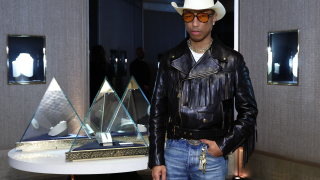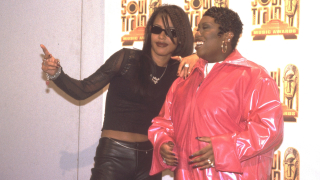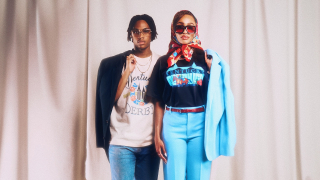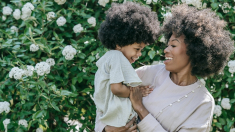How did your parents teach you about Black history? Freelance journalist Chauncia Boyd Rogers came up with a very creative way to introduce her five-year-old daughter, Ava Noelle to notable African-American women, including First Lady Michelle Obama, Harriet Tubman, Phillis Wheatley, Loretta Lynch, Marie V. Brittan Brown, Ida B. Wells, and Oprah Winfrey.
The idea came to Rogers back in January when she saw a photo of Ava and herself at her church’s Black History Month program four years ago, which included dressing and acting as notable African Americans and then discussing each person. She then decided to recreate photos of remarkable Black women and have Ava model each historical figure.
“My daughter turned five last December, so I decided that she should learn about Black history. I had casually shared facts before, but I felt she needed a formal lesson,” Rogers explains. “Ava really loves playing dress-up and she has a vivid imagination, so I borrowed that from the church project. I knew that the fun and interactive element would engage Ava and help her retain the information.”
Deciding which women to depict was probably the biggest challenge, but Rogers ultimately wanted to focus on some of the lesser known women. “My main goal was to teach Ava about women from a variety of categories,” she says. “I didn’t want to saturate the lesson with entertainers and sports figures. I wanted Ava to know that Black women have had a great impact in law, education, medicine, activism, journalism, etc.”
Just how much time and effort went into recreating each shot? It took anywhere from five to 30 minutes to complete hair, makeup and costuming, while the actual photo sessions could be as short as five minutes or as long as one hour. Rogers used items from around the house, such as blankets, paper towels and her husband’s clothing to create the costumes.
“The best part was that I got to dress up and wear makeup,” Ava says. “Sometimes it was fun. Sometimes I wanted to stop taking pictures, but I do like to see my pictures.”
After a few days of Rogers sharing Ava’s photos with her friends on Facebook, the responses began pouring in. People from all over started commenting on Ava’s photos and sending Rogers messages, thanking her and saying that they would like to do the same thing with their children. Although Rogers says her intention was never to seek any publicity, she’s extremely grateful for all the positive feedback she’s received.
“I value everyone’s response, but the most gratifying and sentimental comment came from Sarah Collins-Rudolph,” she says. “Sarah was severely injured in the 16th Street Baptist Church bombing that killed four girls, including her sister, Addie Mae Collins. Sarah and I became Facebook friends after a mutual friend made Sarah aware of my photos. Regarding my ‘Four Little Girls’ tribute, Sarah simply wrote on my Facebook wall, ‘Thank you.’”
Although Ava is aware that her photos have been featured online and in the news, Rogers says she doesn’t fully understand the magnitude of it all quite yet. But, the photo shoot seems to have sparked something in Ava and inspired her to dream even bigger. “Oh! I want to be a lot of things,” she says. “I want to be a top chef, a cupcake baker, and a person who helps at the zoo. I want to be a ballerina and an actor.”
Some folks may see this photoshoot as nothing more than playing dress up in front of a camera, but Rogers says the month-long project became a real history lesson for Ava and that mimicking each historical figure’s facial expressions encouraged her to ask more questions about the women she depicted.
“With Harriet Tubman, for example, Ava wanted to know why she wore a grimace and seemed unhappy,” she explains. “I gave an age-appropriate explanation to help Ava understand the gravity of Harriet’s story.”
Furthermore, Rogers strongly believes in the importance of African-American parents teaching their children about Black history not just during the month of February but all year around.
“When children hear that people who look like them have accomplished great things, it lets them know they can do the same, or it encourages them to go out and break new ground,” she says. “It’s nice to have a month devoted to Black history, but our excellence far exceeds a month. It’s important for everyone to understand that Black history is American history and even world history.”
You can view Ava’s entire photoshoot via Chauncia Boyd Rogers’ Facebook page.
Princess Gabbara is a 20-something Michigan-based journalist and freelance writer. As a graduate of Eastern Michigan University, she’s contributed to a host of publications, including xoJane.com, ClutchMagOnline.com, ForHarriet.com, BlackDoctor.org, and Sesi Magazine. You can read more of her work on her blog. She also tweets @PrincessGabbara.













